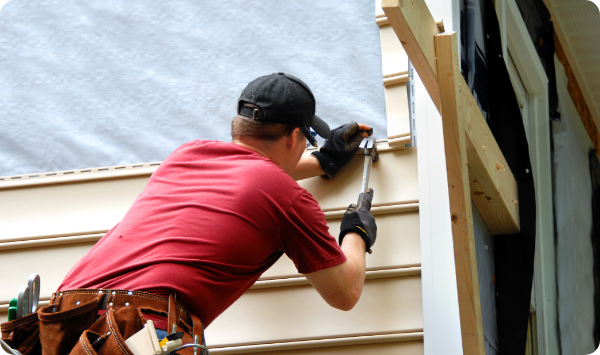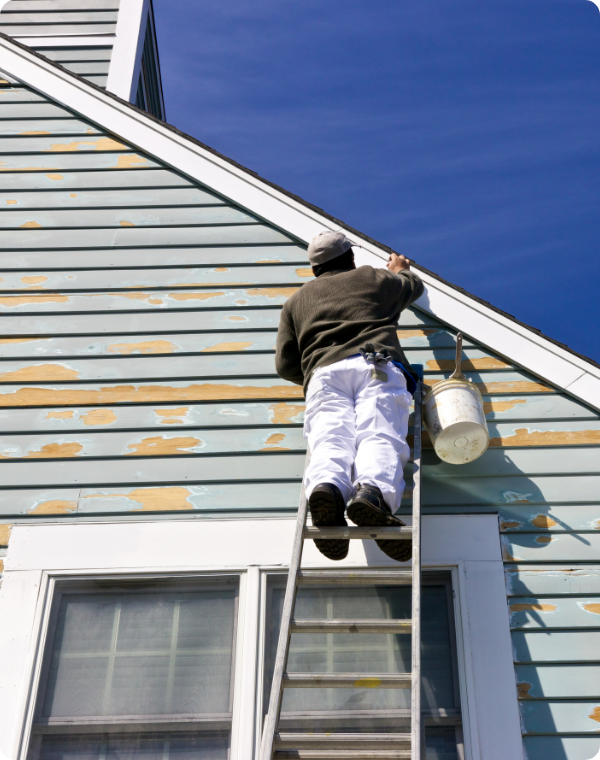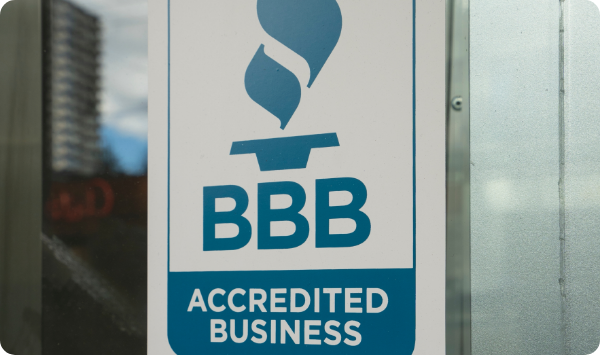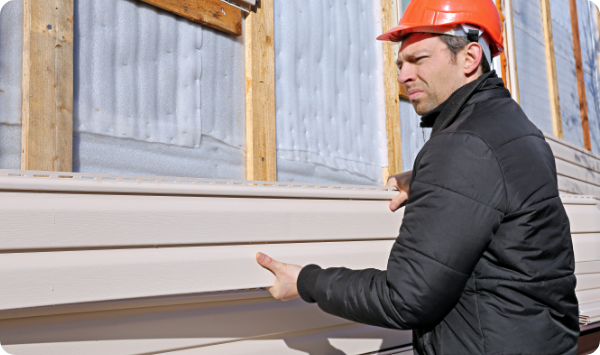Roofing and Siding
Locating trustworthy roofing and siding companies in your area can sometimes be a daunting task. Let's explore how to find reputable builders who can enhance and keep your home safe. We'll discuss how the Better Business Bureau helps spot trustworthy pros, stress the importance of careful screening before hiring, and introduce you to some of the best names in the roofing business.
As you continue reading, you'll gain knowledge that has the potential to save you time and money, while also providing peace of mind for your upcoming roofing or siding project.
Find A Roofer
Fill out the form below and someone will get back to you as soon as possible

What Is Siding?
Siding, in the context of roofing and home exteriors, refers to the protective material attached to the outer side of a house or building. This serves as a defense mechanism against the elements, helping to shield the structure from rain, snow, wind, and varying temperatures.
Beyond its functional role, siding also plays a significant part in defining the aesthetic appeal of a property. It comes in various materials, including vinyl, wood, fiber cement, and metal, each with its own set of advantages, styles, and insulation properties. Selecting the right siding material is essential for increasing the durability and energy efficiency of your home, as well as complementing its overall design and curb appeal.
Cost Factors to Consider When Planning Your Siding Project
When planning your siding project, it's important to understand the factors affecting the total cost. Here are some key considerations:
Material Costs
The type of siding you choose significantly influences the overall expense. Vinyl is often the most cost-effective, while materials like fiber cement and wood may increase the project cost due to their higher quality and durability.
Labor Costs
Installation complexity and the skill level of the contractors can affect labor costs. More intricate designs and higher-quality siding materials usually require specialized skills, increasing labor prices.
Property Size and Layout
The total area that needs siding, along with the complexity of your home's design (e.g., multiple stories, and unique architectural features), will impact the cost. Larger homes or those with complex designs typically require more materials and labor.
Removal and Disposal of Old Siding
If your project involves replacing existing siding, the cost to remove and dispose of the old materials can add to your budget. This process can be labor-intensive and require special handling, especially when dealing with hazardous materials like asbestos.
Additional Repairs
During the siding project, underlying issues such as water damage or structural problems may be uncovered, which could lead to extra repair costs. It's wise to allocate a contingency budget for unexpected repairs.
Energy-Efficiency Features
Opting for siding materials with better insulation properties or choosing to add additional insulation can increase the project cost upfront but may lead to long-term savings on energy bills.
Maintenance and Longevity of Siding Materials
Different siding materials offer varying levels of durability and require different maintenance efforts to preserve their condition and appearance. Understanding the maintenance needs and longevity of each material is crucial in making an informed decision for your home siding project.
-
Vinyl Siding
Known for its low maintenance, vinyl siding requires occasional cleaning with mild soap and water to remove dirt and grime. It is resistant to pests and rot, with a typical lifespan of 20-40 years, depending on the quality of the material and the climate.
-
Wood Siding
Wood siding provides a classic and timeless look but requires more maintenance to protect against moisture, rot, pests, and sun damage. Regular painting or staining, along with prompt repairs to any damaged areas, can extend its life. With proper maintenance, wood siding can last 20-40 years or more.
-
Fiber Cement Siding
This material mimics the look of wood but with less maintenance and greater durability. It is resistant to fire, pests, and rot. Fiber cement siding needs repainting every 15-20 years and can last up to 50 years if well-maintained.
-
Metal Siding
Extremely durable and resistant to fire, rot, and pests, metal siding (often aluminum or steel) requires little maintenance. Periodic cleaning and checks for scratches or dents that may need repair can keep it in good condition. Metal siding can last 40-60 years or more.
Choosing the right siding material involves balancing aesthetic preferences, maintenance capabilities, and budget considerations. Each type of siding material has its benefits and potential drawbacks, and understanding these can help homeowners make choices that will keep their homes protected and looking beautiful for years to come.

Finding the Best Roofing and Siding Companies Near You

Discovering the right team for your roofing and siding needs begins with understanding their past projects and customer satisfaction. Check to make sure they have a proven track record of quality work and positive feedback from previous clients.
Utilizing the Better Business Bureau (BBB)

Why Trust the BBB?
The Better Business Bureau (BBB) stands as a beacon of trust and reliability in the business world. It provides an impartial platform where consumers can access reviews, ratings, and reports on millions of businesses across various industries, including roofing and siding companies. Relying on the BBB can significantly narrow down your search to businesses that adhere to high standards of integrity and customer service.
BBB Accreditation and Ratings
To be BBB accredited, a business must meet specific trust standards, including a commitment to make a good faith effort to resolve any consumer complaints. BBB ratings, which range from A+ to F, serve as a metric reflecting a business's reliability and performance based on factors like customer satisfaction, complaint history, and business longevity. Opting for a roofing or siding company with a high BBB rating can ensure you're making a well-informed decision.


How to Use the BBB for Your Project
-
Start Your Search: Visit the BBB website and use the search tool to find local roofing and siding contractors.
-
Check for Accreditation: Look for companies with BBB Accreditation as they pledge to uphold the BBB's trust standards.
-
Read Reviews and Complaints: Gain insight into other homeowners' experiences to gauge the quality and reliability of the company's services.
-
Compare Ratings: Use the BBB ratings as a guide to evaluate and compare potential contractors based on their track record of customer satisfaction and business practices.
Utilizing the BBB to vet roofing and siding companies can help in your hiring decision, so you partner with a trustworthy contractor who can deliver quality workmanship for your home.
Ensuring Quality Workmanship and Repairs
To ensure quality workmanship and repairs for your roofing and siding needs, understanding the significance of hiring a skilled contractor cannot be overstated. A reputable roofing or siding specialist not only addresses the aesthetic aspects of your home but also prioritizes its safety and durability.

Verifying Credentials and Experience
One of the first steps in assuring quality workmanship is to verify the credentials and experience of the contractor you are considering. Ask for proof of licensing, insurance, and any certifications relevant to roofing and siding work.
Experience in the field is also a key indicator of their ability to deliver quality results. A contractor with a long-standing history of successful projects is likely to possess the skills and knowledge necessary to handle your specific needs effectively.
Checking References and
Past Work
Don’t hesitate to ask for references or examples of past work. Reputable contractors should be able to provide you with a portfolio of their projects or direct you to properties they have worked on. Taking the time to check these references or inspect the quality of their past work firsthand can offer valuable insights into their craftsmanship and commitment to quality.
Understanding the
Materials Used
The quality of materials used in your roofing or siding project plays a significant role in the overall workmanship. Ensure that your contractor uses materials from reputable manufacturers and is willing to discuss the benefits and limitations of different options. A contractor who is knowledgeable about the latest materials and trends in the industry will help you make an informed decision that balances durability, aesthetics, and budget.
Warranty and
After-Service Care
Finally, a quality workmanship guarantee often comes in the form of a warranty. Discuss with your contractor the kind of warranty they offer on their work and the materials they use.
Additionally, understanding their policy on after-service care or handling any issues that may arise post-completion is crucial. A contractor who stands behind their work and prioritizes customer satisfaction is likelier to deliver work of a higher standard.
FAQs
-
How do you quote a siding job?
To quote a siding job, assess the size and complexity of the project, determine material and labor costs, and consider additional factors like permits and cleanup.
-
How to repair siding?
Siding repair involves identifying and replacing damaged panels, sealing gaps or cracks, and ensuring proper attachment to the underlying structure.
-
How much siding do I need for a 2000 sq ft house?
The amount of siding needed for a 2000 sq ft house varies depending on factors like siding material and style, but it typically ranges from 2,000 to 3,000 square feet.
-
How much siding do I need for a 1500-square-foot house?
For a 1500 square foot house, you'll typically need between 1500 to 2250 square feet of siding, depending on factors like siding type and installation method.
Get started today!
It only takes a few moments to find your roofer.
Find A Roofer
Fill out the form below and someone will get back to you as soon as possible